1936 - Year in SF&F: Reviews
|
THE WONDER TIMELINE: SF&F RETROSPECTIVE Read other issues here ----------------------------------------------  H. P. Lovecraft "At the Mountains of Madness" (nv) (Cthulhu Mythos) © 1931, original Astounding Stories, Feb 1936 novel: 1939, Gollancz --/ third place sf novel --/ wonder award --/ adventure award --/ style award --/ emotion award --/ shock value Talking about an H. P. Lovecraft book is -- to paraphrase that old chestnut -- like singing about food, or writing about music. What makes it doubly difficult is that so many others have tried: Lovecraft’s probably been analyzed and dissected more than any other fantasy author. So much so that a comprehensive review has also to mention every other review, and so on and so forth ad infinitum. But putting aside the difficulty of a review, and every other review, At the Mountains of Madness is still a brilliantly told horror story. Best of all, it’s almost a "perfect" Lovecraft story, combining everything that makes Lovecraft … well, ‘Lovecraftian:’ constant impending dread, mysteries beyond time and space, characters driven to the brink of -- and then beyond -- insanity, science knocking at the doors of the nightmarish unknown, and tantalizing clues to a star-and-time-spanning mythology.   Told by William Dyer, of Lovecraft’s ubiquitous Miskatonic U (“Go Pods!”), At the Mountains of Madness is about an expedition to Antarctica, which, in 1936, might as well have been the dark side of the moon. While there, Dyer and the other members of the expedition encounter various dreads and haunting mysteries (this is Lovecraft after all: specifics isn’t what he’s all about) until they discover an ancient city and with it, the horrifying secret of the Elder Things, the once-great-but-now-extinct terrifying rulers of time and space. For a book written more than 70 years ago, At the Mountains of Madness still has a dreadful power. Like the tomes so often mentioned by Lovecraft, the novel crawls under the skin before twisting around the knots of the spine before working its way to the brain and then straight into the mind. Hallucinatory and haunting, the book reads more like a narrative nightmare than what most people think of when they think of a novel.  What’s particularly interesting about At the Mountains of Madness is how it forms a ‘bridge’ between Lovecraft’s mythology. Before it, his "horrors from beyond" were more mythological, but with At the Mountains of Madness he instead moves in a more science fictionlike direction -- a change many other reviewers have called extremely significant for his very long-lasting popularity. Dream, nightmare, hallucination -- Lovecraft and especially At the Mountains of Madness might be hard to pin down, hard to quantify, but the work, and especially its author, remain truly great legends of horror, and not to be missed … if you want to lose sleep.  Review by author M. Christian ---------------------------------------------- Golden Age of "Sense-of-Wonder" Science Fiction and Weird Fantasy... Here are some pickings from the pulps in 1936:  ASTOUNDING STORIES, JUNE 1936 - FULL REVIEW Overall, a vintage showcase of "Sense-of-wonder" adventure science fiction of the Thirties. Splendi-licious. ---------------------------------------------- 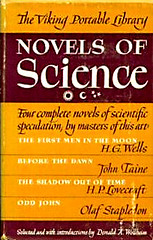 H. P. Lovecraft "The Shadow Out Of Time" (Cthulhu Mythos series) © Astounding Stories, Jun 1936 The Dunwich Horror, 1963 --/ fourth place sf novella --/ wonder award --/ awesome scale Lovecraft's attempt at science fiction ultimately disappoints. I approached this novella with a great expectation to find something of a magnitude of "The Mountains of Madness", but the pedantic and non-involving style of the narrative, combined with not enough tension and visuals, spoiled it for me. It is, however, a grand effort. Here is a synopsis from Wikipedia: "It indirectly tells of the Great Race of Yith, an extraterrestrial species with the ability to travel through space and time. They switch bodies with hosts from the intended space or time destination.The Yithians original purpose is to study the history of various times and places, and they have amassed a "library city" that is filled with the past and future history of multiple races, including humans. Ultimately the Yithians use their ability to escape the destruction of their planet in another galaxy by switching bodies with a race of cone-shaped beings who lived 250 million years ago on Earth. The cone-shaped entities (now also known as the Great Race of Yith) live in a vast city in what would later become Australia Great Desert." review: 01-Aug-06 (read in 2006) 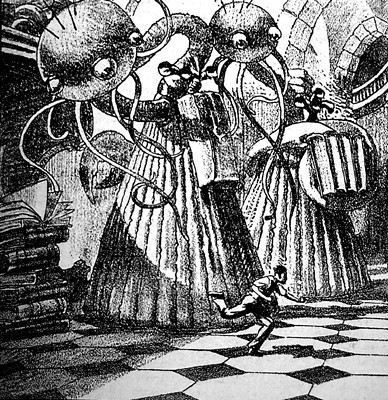 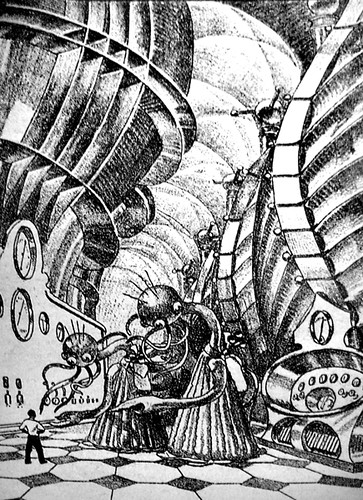 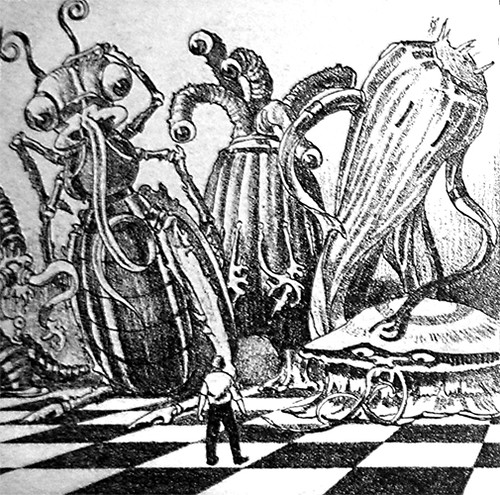 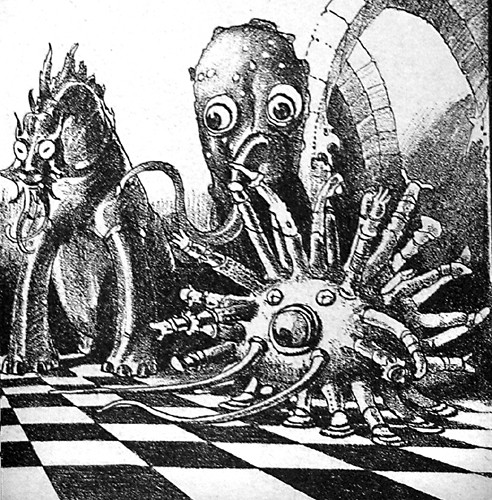 ---------------------------------------------- Nat Schachner "Reverse Universe" © Astounding Stories, Jun 1936 --/ fourth place space sf story --/ wonder award --/ adventure award --/ idea: time backwards --/ awesome scale --/ emotion award --/ rare find This is a "diamond in the rough" - a tough, beautiful story of survival in space (with emphasized undertones of sacrifice and despair, which gives this story an emotional intensity unusual for a pre-Campbell era pulp). But wait, there is more! The story evolves into totally weird "reverse Universe" environment, complete with an alien ecology and loads of wonder. This is a high point for Schachner (not a slacker in "pulp fiction" by any means) and a "blockbuster" of a story. It is really strange that no anthology dealing with space/time exploration ever reprinted it. review: 01-Aug-06 (read in 2006) 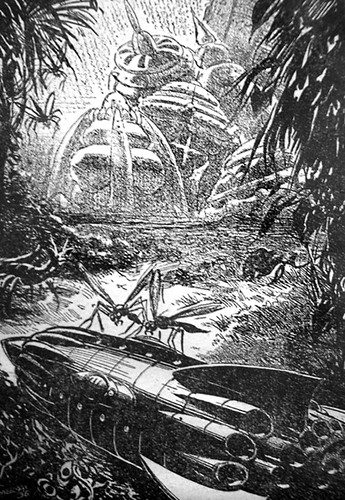 ---------------------------------------------- Stanton Coblentz "The Glowworm Flower" © Astounding Stories, Jun 1936 --/ cool sf story: alien plant dreams --/ wonder award --/ rare find An imaginative tale from legendary Stanton Coblentz. He had uneven writing standards: some of his stories soared into imaginative pantheons worthy of the greatest practitioners of the genre, but some lagged behind with very contrived plots. This story straddles the middle, as it describes in hallucinogenic detail the drugged dreams induced by an alien plant. review: 02-Aug-06 (read in 2006) 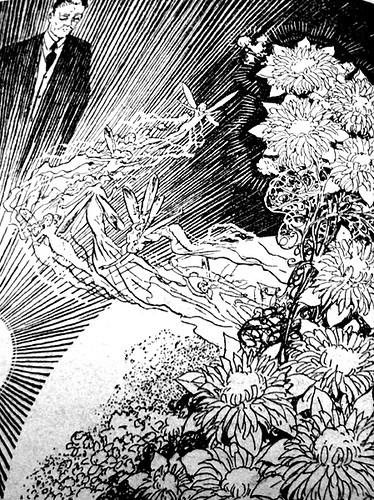 ---------------------------------------------- Ross Rocklynne "At the Center of Gravity" (Colbie & Deverel) © Astounding Stories, Jun 1936 The Men and the Mirror, 1973 --/ fourth place space sf novella --/ idea award --/ wonder award This hard-science space story describes the plight of two men trapped at the center of a hollow planet approaching the Sun. That planet is Vulcan, believed to be closer to our Sun than Mercury. I personally think it is as good as anything Asimov or Heinlein wrote in "problem solving in space" sub-genre; it has a great plot, brisk narrative style and keeps the reader guessing. One of the better efforts of Ross Rocklynne, who should be reprinted more often. review: 03-Aug-06 (read in 2006) 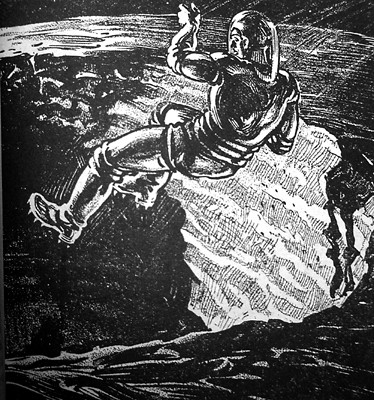 ---------------------------------------------- This issue also contained the third installment of Jack Williamson's "The Cometeers", a large-scale space adventure novel. Read the review of it HERE ---------------------------------------------- Other stories round up the issue, being mostly the "fillers"... F. Orlin Tremaine "Glagula" (as by Warner Van Lorne) © Astounding Stories, Jun 1936 --/ cool sf story: ice giant --/ rare find The usual fare, but with a bigger scale: it describes a polar expedition, an ice giant, great vistas of time and Ice Ages. Quite entertaining. review: 03-Aug-06 (read in 2006) ---------------------------------------------- Nat Schachner "Ecce Homo" (as by Chan Corbett) © Astounding Stories, Jun 1936 --/ cool sf story: epic alien history --/ wonder award --/ awesome scale --/ rare find An even bigger scale here... The canvas is eons and eons of a civilization's development, told with broad, sweeping strokes - a curious (almost non-fiction) piece. The Latin title 'Ecce Homo' is taken from the Bible, and means 'Behold the man!' review: 03-Aug-06 (read in 2006) ---------------------------------------------- Clifton B. Kruse "Origin Of Thought" (as by Spencer Lane) © Astounding Stories, Jun 1936 --/ cool sf story: thought realization --/ wonder award --/ rare find I've never read anything by Kruse before, but apparently he was active enough in the pulps (to even have a pen-name), and this story is written with professionalism and deft handling of the subject. "Whatever you think, you can think it into existence" - certainly an old idea, but presented here with a "sense-of-wonder" touch. review: 03-Aug-06 (read in 2006) ---------------------------------------------- 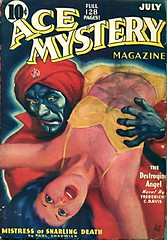 Paul Chadwick "Mistress Of Snarling Death" © Ace Mystery, July 1936 Paul Chadwick writes wonderful science fiction stories, but in his non-sf adventures he is too predictable. Here is the PulpGen blurb: "Paul Chadwick's stories could be plenty weird, but this is his only known tale in a weird menace pulp. His motley collection of characters and surprising plot twists don't disappoint in this entertaining effort." The atmosphere of the story is similar to "The Hound of Baskervilles" review: 10-Jul-06 (read in 2002) ---------------------------------------------- 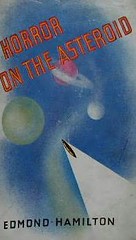 Edmond Hamilton "Horror on the Asteroid & Other Tales of Planetary Horror" (coll) © London: Allen, 1936 --/ fourth place sf collection --/ wonder award --/ rare find A collection true to the spirit of "the romance of the spaceways", a wonderful piece of Hamilton entertainment. The title novella is as hard-boiled adventure as they come, and the rest just sings up a "hymn to wonder" in a joyous choir of space-happy pulp stories. They should keep this in print, for the sheer intensity and color of the material contained here. I would've bought this book in 1936 and I'd buy it now if I saw it. review: 13-Jul-06 (read in 2005) ---------------------------------------------- 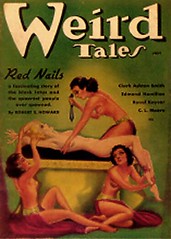 C. L. Moore "Lost Paradise" (Northwest Smith) © Weird Tales, Jul 1936 Northwest Of Earth, 1954 --/ cool sf story Space adventurer Northwest Smith learns about the downfall of a mighty alien race; there is certain bittersweet mood to the story, just like to all Moore's space stories - almost like a heavy-layered chocolate cake with rum and cognac flowing over the crumbling black filling, with orchid flowers sleepily bending over the ornate plate, mixing their heady smell with the soaring aroma of the vanilla topping and caramel lace. So here you have it. review: 13-Jul-06 (read in 2004) ---------------------------------------------- 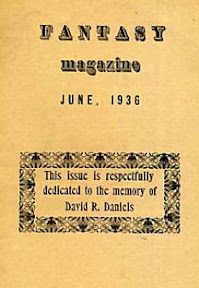 "An Autobiographical Sketch of C. L. Moore" © Fantasy Magazine, June 1936 --/ humour award --/ style award I rarely mention non-fiction here, but this little gem of autobiography is so hilarious and "to the point" that it ranks the best of C. L. Moore's writings! Pure entertainment, as she describes her normal and at the same time weird life as a writer - including her tongue-in-cheek guide on how NOT to write pulp fantasy. This little sketch was only reprinted once in "Echoes of Valor" fabulous anthology. ---------------------------------------------- 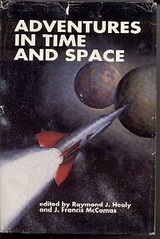 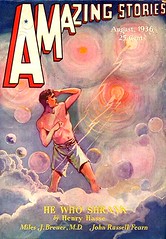 Henry Hasse "He Who Shrank" © Amazing Stories, Aug 1936 Amazing Stories, Nov 1968 --short fiction : 1971 Astounding/Analog All-Time Poll /19 --/ fourth place sf novella --/ wonder award --/ adventure award This story opened the way for adventures in microscopic, and sub-microscopic dimensions (if you don't count early forays into the Atom Universes by Ray Cummings). The protagonists in the story are flying a spaceship inside an atom, discovering "worlds within worlds". It is certainly a classic, although it could benefit from smoother writing. Can't dispute its wondrous sense of scale, of course. As for the "atoms as galaxies and galaxies as atoms", it once again proves the impossibility of a "true infinity" concept - because the laws of infinite scale dictate that atom is infinitely divisible into smaller elements, and "the infinitely small" ultimately will blend into the "infinitely large" as one. Think about that for a minute, and weep for poor particle physicists who have their work carved out for them :) review: 30-Jul-06 (read in 1998) ---------------------------------------------- 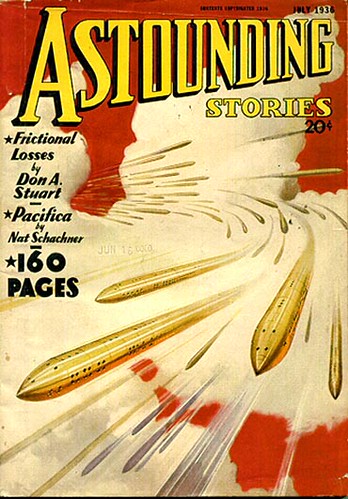 A. MacFadyen, Jr. "The Time Decelerator" © Astounding, Jul 1936 --/ cool sf story --/ rare find It's a pleasant enough pulp story. Ultimately forgettable, but when eating it first time, it tastes not bad and quite chewable. review: 10-Jul-06 (read in 2002) ---------------------------------------------- 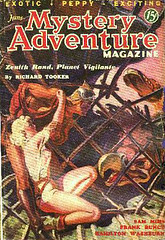 Richard Tooker "Zenith Rand: Planet Vigilante" (Zenith Rand series) © Mystery Adventure Stories, Jul 1936 --/ cool sf story --/ wonder award --/ rare find Zenith Rand was one of the first space adventure super-heroes, but he starred in an average quality series. Mostly appearing in saucy & spicy pulps, the adventures consisted of very straight-forward "damsel-in-distress" scenarios. But wait, there is more... some inspired, imaginative episodes: starring a lusty race of satyr women, carnivorous plant growths, part-griffin part-dragon creatures, trees made of rock, sandstorms, desert planet bases, etc. It's certainly not Edgar R. Burroughs already, and not a "Thrilling Wonder Stories" adventure yet. review: 10-Jul-06 (read in 1988) ---------------------------------------------- 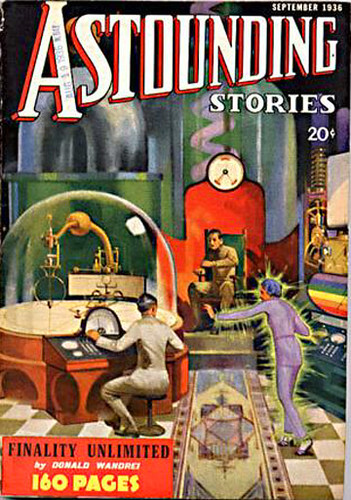 Donald Wandrei "Finality Unlimited" © Astounding, Sep 1936 Eye and the Finger, 1944 --/ fourth place sf story --/ wonder award --/ idea award --/ awesome scale This story may either blow your mind and send you staggering in the general direction of a "Starbucks" for some hope of espresso and free time to ponder upon its described (and implied) immensities, or it can mightily frustrate you with its "rubber" science (meaning "very flexible, and likely nonsense scientific stuff") and crude literary qualities. Your choice. A vintage "Wonder Pulp" tale, it displays the same unique qualities of cosmic imagination as other Wandrei tales, such as "The Red Brain", "Colossus", "Something From Above", etc. Is it refined gasoline to feed your sophisticated literary SUV, or is it crude, black, raw oil gushing from depths unmentionable and vast, covering you from head to toe, branding you as a "wonder junkie" and providing a gleam in your eyes for days to come? The latter, of course. Some inspired, vaulted halls of imagination span this narrative; go hide and frolic inside them, and do not let anybody tell you differently. review: 24-Sep-06 (read in 2002)  Artwork by Frank R. Paul ---------------------------------------------- 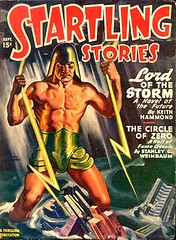 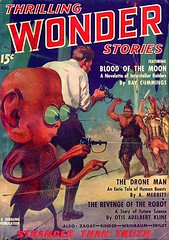 Stanley Weinbaum "The Circle Of Zero" © Thrilling Wonder Stories, Aug 1936 Startling Stories, Sep 1947 A Martian Odyssey, 1949 --/ cool sf story --/ wonder award --/ idea award No wonder some editors refused to buy this story: it's built upon the most basic of all paradoxes - the impossibility of true infinity, or true eternity. Why scientists keep operating with these concepts is beyond me. You may be shocked to discover that in pure mathematical sense infinity is impossible: because then everything that can happen, is happening somewhere, including the infinite amount of copies of you and me doing slightly different variations of what we are doing now (or flying whales and pink elephants, whatever - infinity is big enough to allow for anything). As for eternity, it too is long enough to allow for ANYTHING to happen... Here is a quote from this story: "Since in eternity everything possible must happen, it follows that everything must already have happened !" Weinbaum uses this concept as a basis for time travel in this story, but as for the "impossibility of infinity" itself, science still has to explain this paradox. To my knowledge, they just keep merrily rolling along, brushing it aside. Certainly makes you think, eh? review: 30-Jul-06 (read in 1998) ---------------------------------------------- 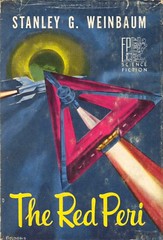 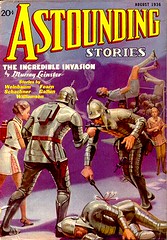 Stanley Weinbaum "The Proteus Island" © Astounding, Aug 1936 The Red Peri, 1952 A Martian Odyssey, 1962 --/ cool sf story --/ wonder award In a way, this story is derived from "The Island of Dr. Moreau"; it is also perhaps the first story to describe genetic engineering. It postulates that "the nature of the beast" cannot be changed as easily as its physical form, and goes on to entertain the reader with a thrilling menace of monsters on an abandoned island. But it is nowhere as good (or truly weird) as "Fungus Isle" (1923) by Philip M. Fisher, which takes the cake among such stories. review: 30-Jul-06 (read in 1998) ---------------------------------------------- 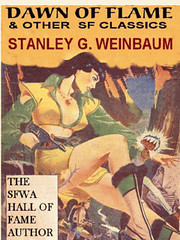 Stanley Weinbaum "Dawn of Flame" (coll) © Ruppert Publ., 1936 --/ fourth place sf collection --/ wonder award --/ idea award This is The Weinbaum Memorial Volume - most stories appeared in other collections, notably "The Martian Odyssey & Others" but this rare edition came out first. I saw it on the web for close to $2000. The stories themselves, of course are "classics" all, and a superb entertainment. Stanley Weinbaum's tragic death has put an end to his brilliant writing carreer, just as he began to plan an ultimate "struggle of Good vs. Evil" novel, an epic to end all epics. review: 30-Jul-06 (read in 1998) ----------------------------------------------   Jack Williamson "The Comeeters" (nv) (The Legion Of Space 2) © Astounding Stories, May-Aug 1936 novel : Fantasy Press, 1950 Three From The Legion, 1977 --/ fourth place space sf series --/ wonder award --/ adventure award --/ awesome scale Here is the blurb from paperback reprint: "a spaceship twelve million miles long, the secret weapon that controls the Universe, a superhuman traitor to all mankind and, defying mortal peril, fantastic dangers, and the dread powers of the invincible Cometeers, the grandest trio of swashbucklers in all of science fiction". Lots of ambitious action, however some of it is pretty flat and comics-like, the writing is crude, and only a wonderful scale and totally awesome creatures set this trilogy apart from the lesser Campbell-era "space opera" efforts. The Cometeers of the title are an alien race of energy beings controlling a "comet" which is really a giant force field containing a swarm of planets populated by their slaves. Some say that the series' characters are taken from "The Three Musketeers" with Falstaff added, but I find it a bit far-fetched. Just a good old large-scale non-sophisticated space opera.  ---------------------------------------------- Return to the Wonder Timeline Labels: Timeline |
Click to go to "Dark Roasted Blend" site

|
Collecting Pulp Magazines Ephemera Interview with Avi Abrams |

|
Enchanting Victorian Fairy Tale Art "Then world behind and home ahead..." |

|
Exceptional British Scifi Artwork from the 1950s Space Pulp Art by Ron Turner and other British artists |

|
Pulp Pleasures: Eando Binder Great space adventure fiction from the 1930s "Where Eternity Ends" and other rare gems |
Also read recent posts:
Author's Pen Names - Most Complete List Ever
The Wonder Timeline: SF&F Restrospective
Space Adventure Article
|
"SF&F Reading Experience" is part of "Dark Roasted Blend / Thrilling Wonder" family of sites. We try to highlight the most entertaining and rewarding science fiction and fantasy, with emphasis on memorable reader experience, not necessarily general acceptance by the critics. Have fun, and delve into our extensive ratings and reviews! Most reviews are written by Avi Abrams, unless otherwise noted. Reviews also appear on our unique historical retrospective page Wonder Timeline of Science Fiction. Feel free to submit your own review, if a particular story is not listed here. All major OFFICIAL AWARDS are highlighted in BLUE ("winner" has a letter "W" by it, otherwise it is a runner-up only) Our PERSONAL AWARDS (ratings) are highlighted in RED and PURPLE: --/ first place : --/ second place : --/ third place : --/ fourth place : --/ cool : (equal to fifth place) ALL "BEST OF" LISTS ARE LOCATED HERE These awards are given in the following categories: - novel : - series : - novella : - story : - collection : Also, there are our personal STYLE / GENRE SPECIFIC AWARDS. These reflect the story's content and the lasting impression on the reader: --/ wonder award sense-of-wonder, "visual intensity" and inventiveness --/ idea award originality of idea / concept --/ adventure award exhilarating plot, excitement / action --/ style award outstanding literary qualities, inimitable style --/ romance award intense and beautiful love / relationships --/ humour award funny and cool --/ emotion award touching, lasting impression, sensitivity --/ shock value altogether wild --/ awesome scale mind-boggling; further enhances sense-of-wonder --/ rare find very hard to locate, mostly from old pulps, never reprinted, etc. Again, please feel free to leave your own review or comment under every writer's entry; also recommend us other stories you liked. |

0 Comments:
Post a Comment
<< Home